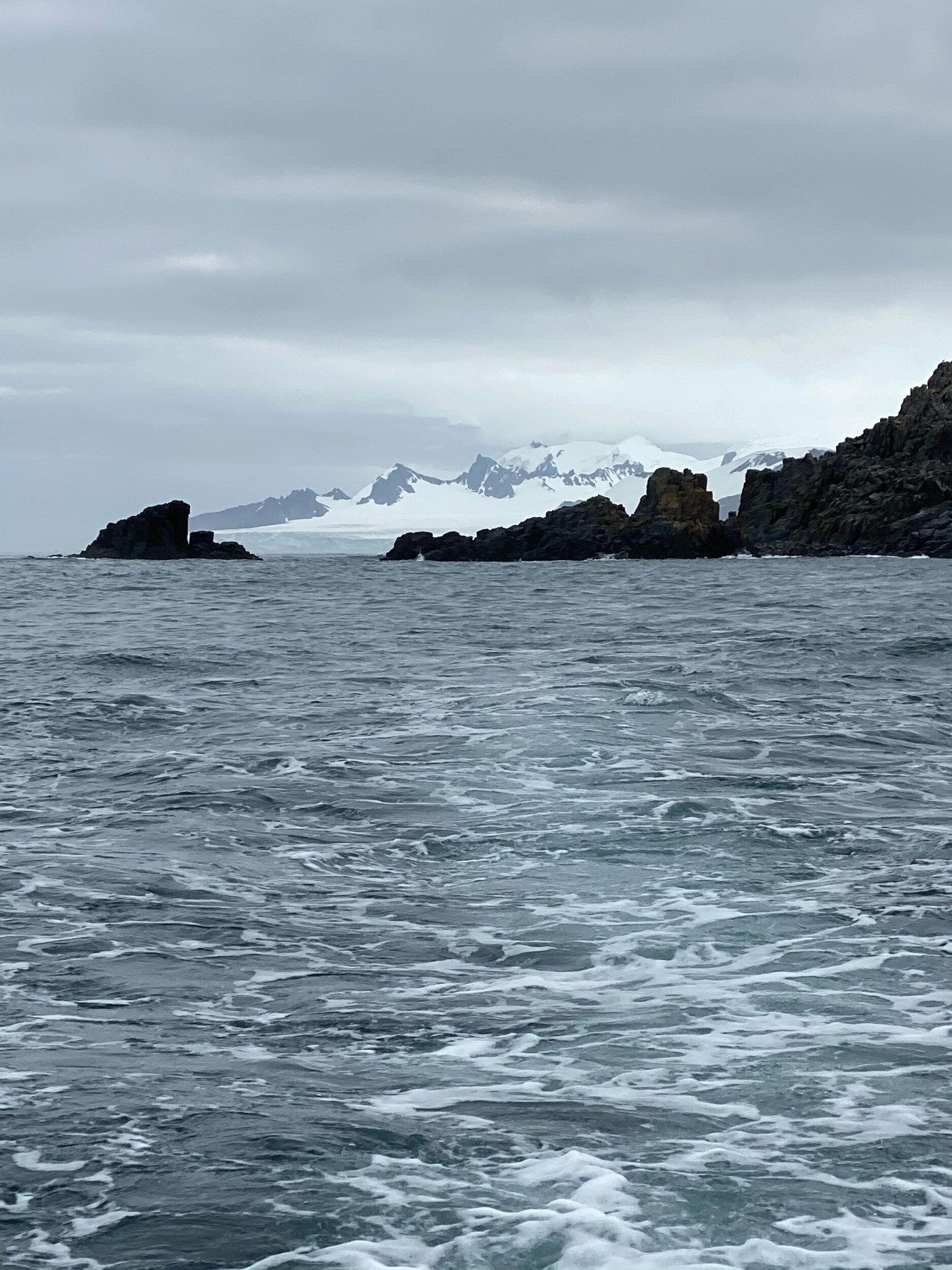1-9-10 - South Shetland Islands
/It’s our second day of rocking and rolling on the Hondius as we continue to proceed through the Drake Passage.
After breakfast, we are introduced to the expedition guides. The staff on the boat are a combination of researchers, naturalists, scientists with a variety of expertise related to the expedition. There are specialists in geology, glaciology, penguins, birds, whales, history, wildlife acoustics, photography and videography. We learn that this maiden season for the MV Hondius which is only six months old and was coincidentally built in Split, Croatia, one of our favorite places. Connect the dots. The Hondius is the first cruise by any Antarctica cruise line that assembled these scientific experts and researchers as the expedition guides. The staff is eager, vibrant and very much excited to share their knowledge with us novice passengers.
The cruise was entitled “Discovery and Learning” but we had no idea they would assemble an international team of scientists and researchers to carry out the learning part. There were 22 guides representing UK, Poland, Sweden, Svalbard, Norway, Netherlands, China, Japan, US, Spain, Poland, Switzerland, Canada, Peru, Australia, New Zealand, Denmark and Mexico. Kyle starts muttering about another person from Poland that we’ve met on the trip and that he should have figured out how to get us there during the first half of the trip. No matter, the Hondius has assembled the Antarctica “Dream Team” of expedition guides.
The morning lectures are on photography and videography where Neil and George gives us tips and suggestions on how to take the best pictures on the trip. It was really useful. Kyle is looking around the room and takes note that most of the passengers have fancy digital cameras with gigantic three foot long lens. Kyle looks forlornly down at his iPhone camera with a serious case of giant zoom lens envy. Unfortunately, since we are traveling continuously, we don’t have the luxury of lugging around a giant, heavy camera for another 5 months. Some people looked like they would have to check three extra bags just to transport their camera equipment. Oh well, we’ll have to do the best we can with the iPhone.
After lunch, the expedition leader, Martin, announces a special treat. Given the favorable weather and conditions, we made it through the Drake Passage ahead of schedule allowing for the addition of an unscheduled expedition in the South Shetland Islands this afternoon. The passengers erupt in excitement and then run to their rooms to start preparing the layers of clothing they will need. We brought an extra suitcase from the US stuffed full of cold weather gear for our Antarctica exploration. In addition, we rented heavy duty waterproof jackets and pants.
Once we are bundled up, we wait our turn to get on the Zodiac boat from the Hondius. The Zodiac boats are super heavy duty rafts with an outboard motor that hold 12 people. There is a rule that there can only be maximum of 100 people on a landing site at a given time. Since there are 170 passengers plus 22 expedition guides, they break up the expedition so that half of the group spends 1.5 hours on land exploration and then swap with the other group spending another 1.5 hours cruising around the ocean and icebergs on the Zodiac boat looking for wildlife.
We get dropped off on Robert’s Island and the first thing we notice is that there are penguins everywhere. Seriously, we mean everywhere you look. Of course that many penguins bring with them the strong smell of penguin poop. The guides have marked off our path and we must give the penguins five meters of space. We snap away pictures of all the penguins. We find a lone Adelie penguin in a sea of Gentoo and Chinstrap penguins. He must have gotten lost in the ocean.
Also on the beach, there are about 15 elephant seals lying together. They are massive creatures chattering away with deep guttural sounds and grunts. We hike around the island taking it all in. Then we hop in the Zodiac to cruise around the water. We get some great views of glaciers from the water. Kyle asks the guide if the icebergs can puncture a hole in the Zodiac. The guide tells us no that has never happened but Leopard seals have been known to chew through the Zodiac rubber. Kyle says that he’s all for seeing wildlife but maybe we should try to avoid the Leopard seals as the water feels pretty cold.
We notice that there is not as much snow as we are expecting. However, we are still north of the continent of Antarctica. Technically, anything south of 60 degrees latitude is considered Antarctica so the South Shetland Islands are considered Antarctica even they are not part of Antarctic Peninsula on the continent.
The daily recap today is short since we got back late from the unexpected expedition and its past normal dinner time when we get back on the ship. We are tired from our first excursion but exhilarated.






























